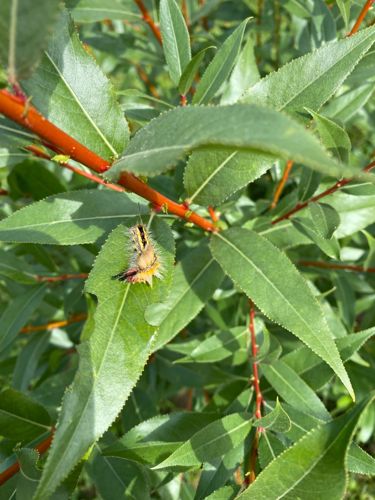White-marked Tussock Moth
Scientific Name: Orgyia leucostigma
Order & Family: Lepidoptera (moths and butterflies); Erebidae (tussock moths and allies), formerly Lymantriidae.
Size: Caterpillars typically range from 25-35 mm (1-1.4 inches) in length. Adult moths have a wingspan of 25-35 mm (1-1.4 inches).

Natural Habitat
Commonly found in temperate forests, woodlands, urban parks, and suburban gardens where their host plants are abundant.
Diet & Feeding
As caterpillars, they are generalist feeders, consuming the leaves of a wide variety of deciduous trees and shrubs, including willow (which appears to be in the image), maple, birch, oak, apple, and cherry.
Behavior Patterns
The caterpillar is the destructive feeding stage, consuming leaves before pupating. The cocoons are often spun on tree trunks or in sheltered locations. Adult moths are typically nocturnal and short-lived, with their primary purpose being reproduction.
Risks & Benefits
Risks: The hairs of the caterpillar can cause skin irritation (dermatitis) and allergic reactions in some individuals if touched, due to urticating bristles. They can also defoliate host trees, especially during outbreaks, which can weaken or stress the trees. Benefits: They serve as a food source for various predators (birds, parasitic wasps, flies) and are part of the ecosystem's food web. Larval feeding can contribute to natural selection by culling weaker trees. As adults, they play a minor role in pollination, though it is not their primary ecological function.
Identified on: 9/3/2025